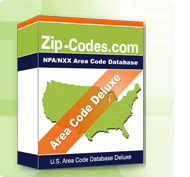How Zip Codes Are Assigned and What They Mean
Zip codes are a seemingly simple part of our addresses, but they carry significant meaning. Have you ever wondered how they’re assigned and what they reveal about a location? Understanding zip codes opens up a fascinating world of geographic organization, especially for businesses using data-driven insights.
What Is a Zip Code, and Why Was It Created?
Zip codes, short for "Zone Improvement Plan" codes, were introduced in 1963 by the U.S. Postal Service. They were designed to make mail delivery faster and more efficient by organizing regions into specific delivery zones. Each number within a zip code represents a layer of detail about a location, allowing the postal service to route mail more accurately.
But zip codes have grown far beyond mail—they’re now essential in location-based services, marketing, and logistics, helping businesses understand regional demographics.

How Are Zip Codes Assigned?
Zip codes are structured in a five-digit format: each digit has a specific meaning and helps define a location more precisely.
- The First Digit - The first digit represents a group of U.S. states. For instance, zip codes in the range of 0 belong to New England states, while California and Nevada fall into the 9 group.
- The First Two Digits Together - The first two numbers form a unique area within a larger region, typically a state or part of a state. For instance, Texas has multiple two-digit prefixes like 75, 76, and 77, each covering a different metro area.
- The Last Three Digits - These identify specific post offices or delivery areas within a region. For example, within the 902 range, 90210 refers specifically to Beverly Hills, a unique code known worldwide.
By breaking down areas so specifically, zip codes help organize vast amounts of mail and data. If you're working with zip code data for analytics, a service like Zip-Codes.com offers an NPA NXX Database Download that covers zip and area codes across the U.S., making it easy to access up-to-date location data.
Beyond Mail – The Wider Meaning of Zip Codes
Today, zip codes do much more than help mail carriers. Businesses rely on them for market research, demographic analysis, and even risk assessment. For instance, insurance companies might use zip code data to assess accident rates and environmental risk factors in specific areas. Marketers also segment audiences by zip codes to create region-specific campaigns and personalized offers.
When used with tools like Zip-Codes.com’s Area Code Database and downloadable resources like the NPA NXX Database, businesses can enhance their strategies and better understand their target markets.
Why Are Zip Codes Important?
Zip codes represent more than numbers on mail—they’re powerful tools for understanding locations and populations. For instance, a company selling winter gear could prioritize marketing in northern zip codes, while a beachwear brand might target coastal regions. With tools from providers like Zip-Codes.com, you can harness zip code data for improved business insights.
Next time you see a zip code, remember: there’s more there than meets the eye. Want to dive deeper into data with ease? Check out Zip-Codes.com for top resources and solutions in geographic and demographic data.
Comments
Post a Comment